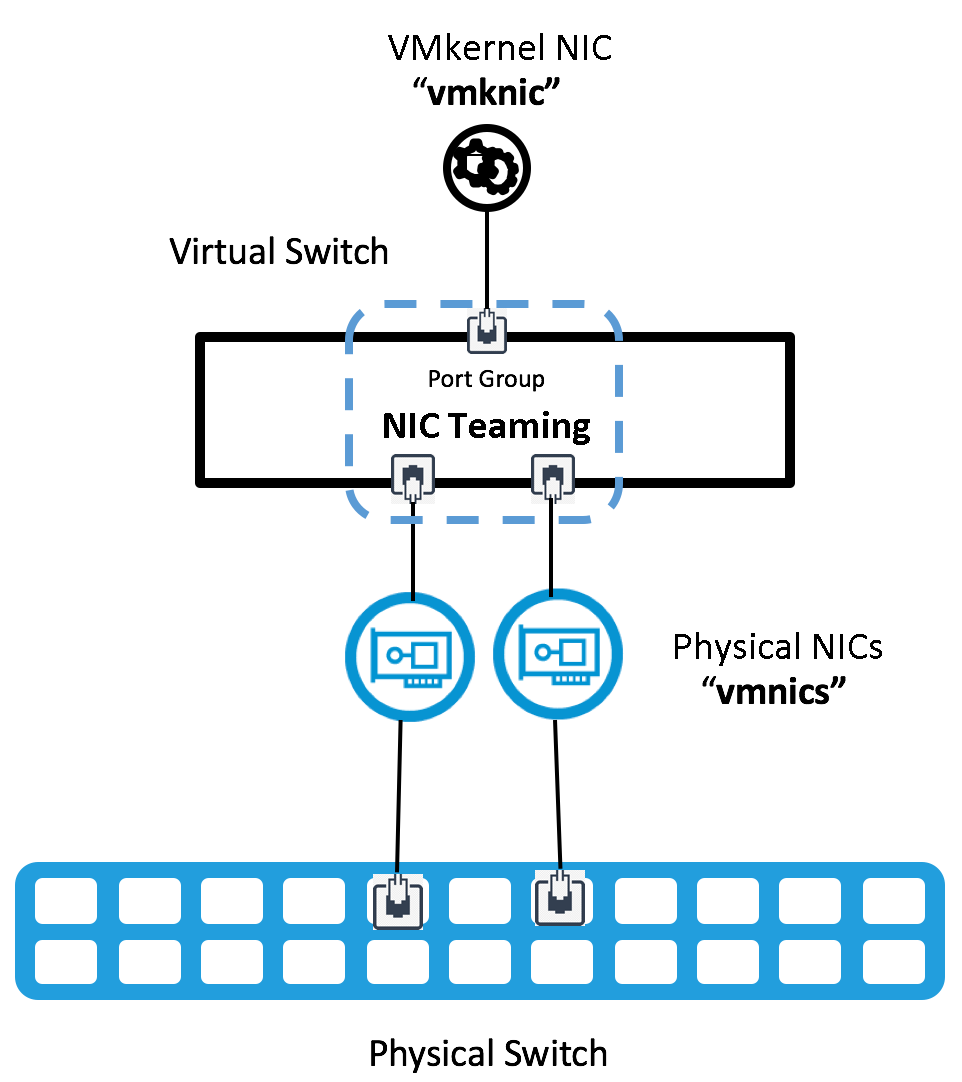Basic NIC teaming uses multiple physical uplinks, one vmknic, and a single switch.
vSphere NIC teaming uses multiple uplink adapters, called vmnics, which are associated with a single virtual switch to form a team. This is the most basic option, and you can configure it using a standard vSphere standard switch or a vSphere distributed switch.

Failover and Redundancy
vSAN can use the basic NIC teaming and failover policy provided by vSphere.
NIC teaming on a vSwitch can have multiple active uplinks, or an Active/Standby uplink configuration. Basic NIC teaming does not require any special configuration at the physical switch layer.
A typical NIC teaming configuration has the following settings. When working on distributed switches, edit the settings of the distributed port group used for vSAN traffic.
-
Load balancing: Route based on originating virtual port
-
Network failure detection: Link status only
-
Notify switches: Yes
-
Failback: Yes
Load Balancing vSAN traffic.
-
Load balancing: Route based on originating virtual port
-
Network failure detection: Link status only
-
Notify switches: Yes
-
Failback: Yes